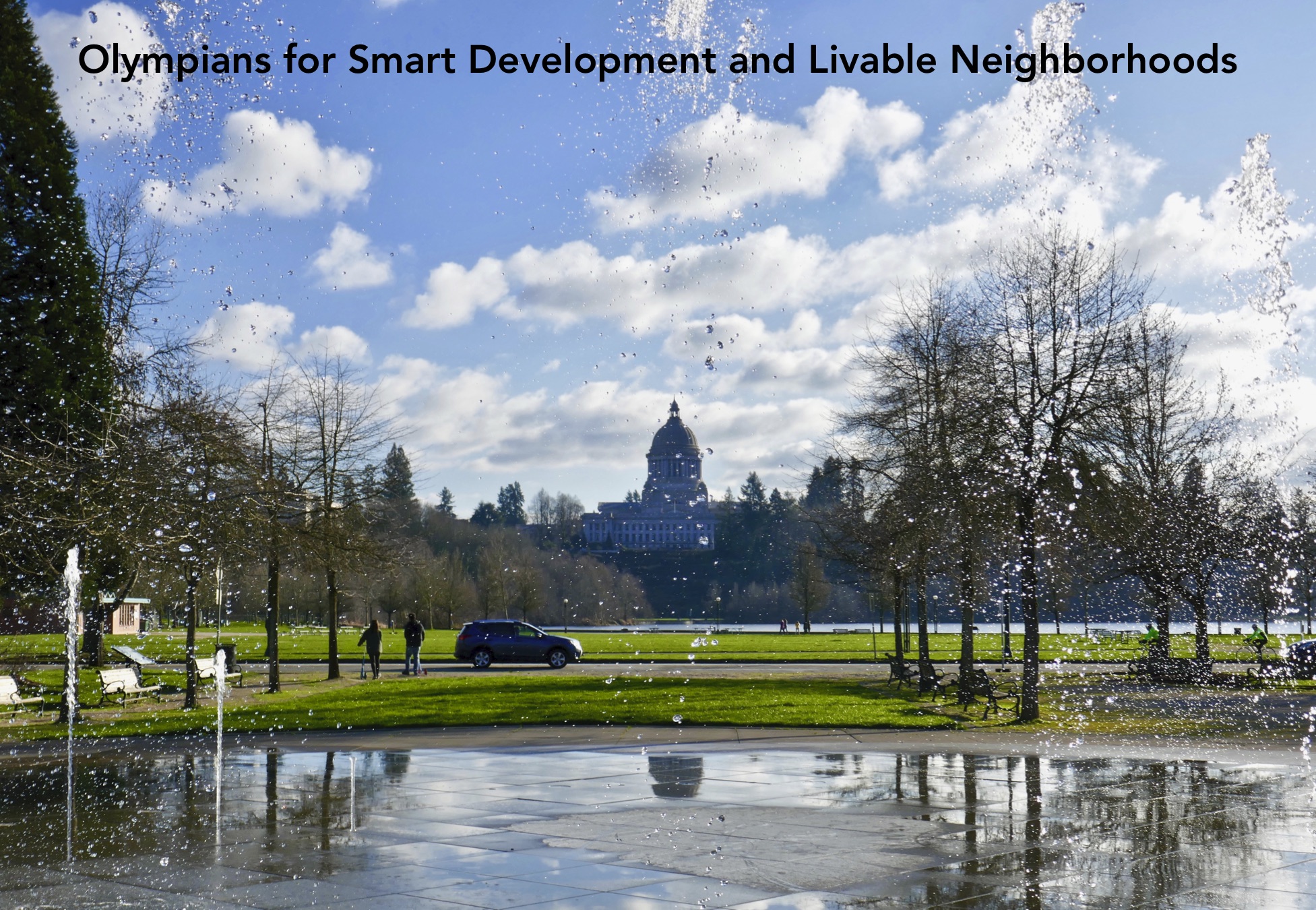Green Space Reduction proposed
7/22/20 The Land Use and Environment Committee was made up of council-members Jessica Bateman, Dani, Madrone and Clark Gilman. They approved a recommendation to reduce hard surface requirements for new development in residential neighborhoods. What does this mean? There are 3 surface categories for land:
Green Space: Unpaved land for trees, grass, other plants
Impervious Surface: Area where water can't seep into the ground, including houses, garages, sheds, concrete and asphalt paving
Hard Surface: This is any non-green surface, including Impervious Surface and pervious paving, like pavers, pervious concrete, decks
At right are the current rules on what percentage of a house lot can be impervious surface. These rules will stay the same

But the City wants to increase Hard Surface limits, which decreases green space (Total Lot Area - Hard Surface = Green Space). The Hard Surface limits now, and then what is proposed, are shown below.

Below are 4 single-family minimum-sized R-6-12 house lots (3500 sf, and a 40’ width) with the new rules. Shown are are some bird’s-eye views of 4 adjacent lots, now and if proposed new rules are adopted.
Everything is drawn to scale. In all diagrams, it is assumed that maximum impervious surface and hard surface are used. With new Hard Surfacestandards, a yard to hang out in or grow something, is practically gone.
But intuitively, what does this change look like? First, let's look at what we have now. Below is a bird's-eye view of 4 duplex lots in a row. The minimum lot width is 80 feet, and the minimum lot size is 7200 sf. Green space has to make up 35% of the lot. The resultingdensity of these duplexes would be 12 units per acre.


Now, using new lot and green space rules, imagine 4 duplexes in a row, with 40-foot wide, 3500 sf lots and 25% green space. This would effectively be a giant apartment building with air spaces between the rooms. And imagine the parking situation. Housing density would be 25 units per acre. Is this a residential density? Of course not, it’s an urban density.

You might think that, except for adding a little more pavement and subtracting plants and grass, drainage shouldn’t be much different, even if the experience of being outdoors suffers.But it does make a difference, as the Delaware Extension Service makes clear:
https://www.udel.edu/canr/cooperative-extension/fact-sheets/permeable-impermeable-surfaces/

In summary, we promoted the need to retain duplex lot requirements and green space requirements. If not, neighborhoods will look and feel like crowded, poorly-planned urban areas, ruining one of Olympia’s gems which draw people tolive and stay here.
© Copyright Olympians for Smart Development and Livable Neighborhoods
